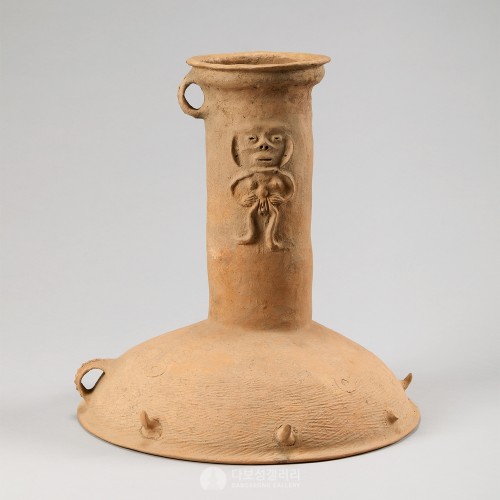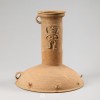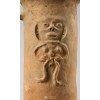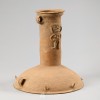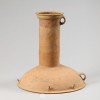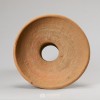본문
이 유물은 신석기 때 처음 만들어진 도기 북입니다. 나팔 모양처럼 생겼고, 절반은 원통 모형입니다. 원통형의 몸체에는 양각으로 두 팔을 허리에 대고 있는 사람이 새겨져 있습니다. 하단의 나팔처럼 생긴 부분에는 동물 가죽을 부착시키기 위한 갈고리가 여러 개 부착되어 있습니다. 가죽을 댈 수 있는 넓은 원형의 안쪽은 반원으로 파여 있으며, 반대쪽의 원통까지 뚫려 있습니다. 위아래의 양끝에는 작은 구멍이 뚫린 귀가 2개 붙어 있는데, 끈을 매달아 휴대할 수 있게 만든 것입니다. 이 양각 인물문 도고는 소리가 웅장하고 전송 효과가 뛰어나 먼 옛날에 제사와 전쟁, 공연, 사냥 등 다양한 상황에서 사용되었을 것으로 추정됩니다.
중국에서 흙으로 그릇을 만드는 토기 문화는 신석기시대에 시작되어 도기 문화로 발전했습니다. 신석기시대의 중국 도기는 황하(黄河) 유역과 장강(長江) 유역·동남해안·북방 유역 등으로 광범위하게 분포합니다. 황하와 장강 중상류 지역은 채도로 유명하고, 하류 지역은 정교한 백도기(白陶器)와 흑도기(黑陶器)로 유명하며, 동남해안 지역은 경도기(硬陶器)로 대표되고, 북방 지역은 특색 있는 조형도기로 유명합니다. 신석기 도기는 제작 방법에 따라 수제(手製)·모제(模製)·완륜(慢輪)·쾌륜(快輪)으로 나뉘며, 문양으로는 압인(壓印)·박인(拍印)·각화(刻畵)·채색(彩繪)·누공(鏤孔)으로 나뉩니다. 제작 가마로는 횡혈요·수혈요가 있습니다. 이처럼 다양한 신석기시대의 다양한 도기문화는 오늘날 도자기의 모태가 되었습니다.
Chinse pottery began in the Neolithic period and developed into earthenware. Neolithic Chinese earthenware is widely distributed along the Yellow River, the Yangtze River, the southeast coast, and the northern basin. The upper-middle areas of the Yellow River and Yangtze River are known for painted pottery, the downstream area is known for elaborate white pottery and black pottery, the southeast coastal area is represented by hard pottery, and the northern region is famous for its distinctive shaped pottery. It is also divided into the hand-made, mold-made, slow wheel, and the fast wheel by production method. The patterns are divided into stamped, printed, engraved, painted, and perforated. Kiln types include horizontal kilns and vertical kilns. As such, various pottery cultures of the Neolithic Age became the beginning of pottery today.
